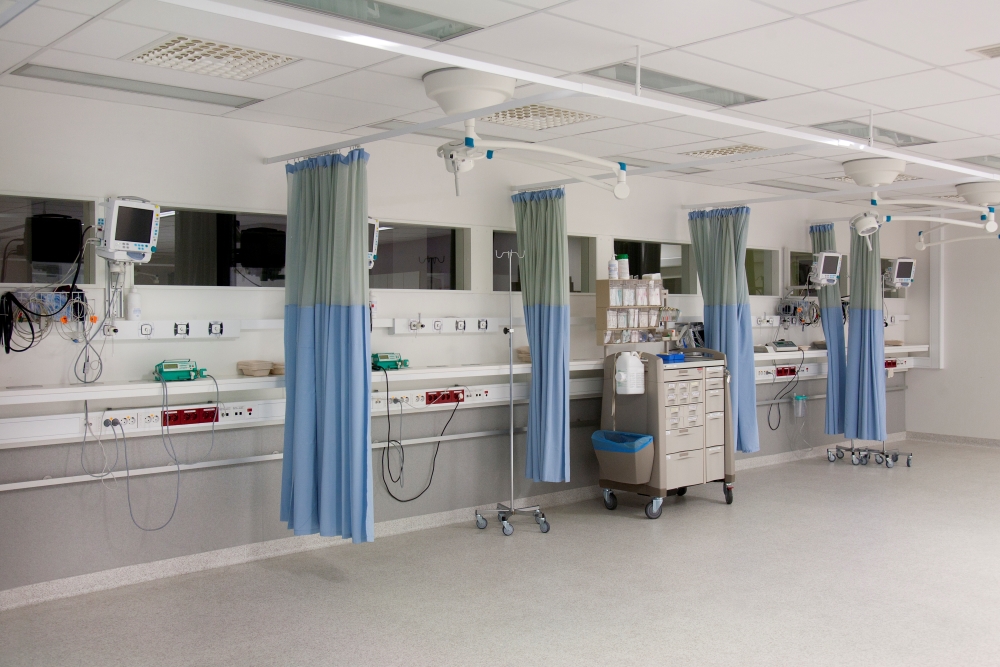HEALTH
The Importance of Hospital Cubicle Curtains: Enhancing Privacy and Comfort in Healthcare Settings

In healthcare environments, every detail counts in ensuring the comfort and well-being of patients. One often-overlooked element is the hospital cubicle curtains. These seemingly simple fixtures play a vital role in patient privacy, infection control, and the overall atmosphere of a healthcare setting. This article explores the significance of hospital cubicle curtains and how they contribute to a better experience for patients and healthcare providers alike.
Privacy in Healthcare: A Fundamental Right
One of the primary functions of hospital cubicle curtains is to provide privacy for patients during their treatment. In an environment where sensitive information is frequently shared, having a designated space for each patient can make a significant difference. Patients undergoing examinations, treatments, or consultations often feel vulnerable, and a lack of privacy can exacerbate anxiety and discomfort.
The presence of cubicle curtains allows for a more intimate and secure environment, enabling patients to discuss their conditions and concerns without fear of being overheard. This sense of privacy not only helps in building trust between patients and healthcare providers but also fosters open communication, which is essential for effective diagnosis and treatment.
Infection Control: An Often Overlooked Benefit
Infection control is a critical concern in healthcare settings, and hospital cubicle curtains can play an unexpected role in this aspect. These curtains can serve as a barrier to prevent the spread of pathogens, particularly in high-traffic areas such as emergency rooms or outpatient clinics.
Research indicates that hospital curtains can harbor a variety of microorganisms, making regular cleaning and maintenance essential. Facilities that invest in antimicrobial curtains or implement rigorous cleaning protocols can significantly reduce the risk of hospital-acquired infections (HAIs). By ensuring that cubicle curtains are cleaned frequently, healthcare facilities not only protect their patients but also promote a healthier environment overall.
Enhancing Patient Experience: Aesthetic and Functional Design
Beyond privacy and infection control, hospital cubicle curtains contribute to the overall aesthetic of a healthcare facility. Modern designs come in a variety of colors, patterns, and materials, allowing hospitals to create a welcoming and calming atmosphere. Research has shown that the environment in which patients receive care can influence their emotional well-being and recovery process.
Bright, cheerful colors or serene patterns can help alleviate anxiety and make the hospital experience feel less clinical. Furthermore, curtains that are easy to operate and maintain can enhance the functionality of healthcare spaces. Facilities that prioritize user-friendly designs often find that they can improve staff efficiency and patient satisfaction simultaneously.
Compliance with Healthcare Regulations
In addition to the comfort and aesthetic benefits, hospital cubicle curtains must comply with various healthcare regulations. These regulations often dictate the types of materials that can be used in patient care areas, focusing on fire safety and infection control standards.
Facilities must ensure that their cubicle curtains are made from materials that meet these regulations, as failure to do so can result in penalties and pose risks to patient safety. Furthermore, staying compliant with these regulations is an ongoing responsibility. Regular audits and assessments can help ensure that hospital cubicle curtains remain in line with the latest healthcare guidelines.
The Role of Technology in Cubicle Curtain Management
As technology continues to evolve, so too do the solutions for managing hospital cubicle curtains. Innovations such as automated curtain systems can enhance privacy and improve operational efficiency. These systems allow for quick adjustments, enabling healthcare providers to create private spaces instantly as needed.
Additionally, some facilities are now incorporating sensors and smart technologies to monitor the cleanliness and condition of curtains. This proactive approach not only simplifies maintenance but also ensures that patient safety remains a top priority.
The Human Element: Staff and Patient Interactions
Ultimately, hospital cubicle curtains are not just physical barriers; they represent a fundamental aspect of the patient experience. The interactions between healthcare staff and patients occur within the context of these curtains, making their role in fostering a respectful and compassionate environment even more crucial.
When staff can easily create private spaces for discussions or treatments, patients are more likely to feel valued and understood. This contributes to a culture of empathy within healthcare settings, leading to improved patient outcomes and satisfaction.
Conclusion: A Small Detail with a Big Impact
In summary, hospital cubicle curtains may appear to be a minor detail in the vast landscape of healthcare design, Direct textile store but their impact is substantial. By ensuring privacy, promoting infection control, enhancing aesthetics, and adhering to regulations, these curtains contribute significantly to the overall quality of care.
Healthcare facilities should recognize the importance of investing in high-quality, functional, and aesthetically pleasing cubicle curtains. In doing so, they not only elevate the patient experience but also reinforce their commitment to providing a safe and supportive environment for all who enter their doors. Ultimately, these small elements can lead to significant improvements in patient care, making hospital cubicle curtains an essential component of any healthcare facility.
Stay up-to-date with the latest celebrity news and gossip at Techranker.co.uk











